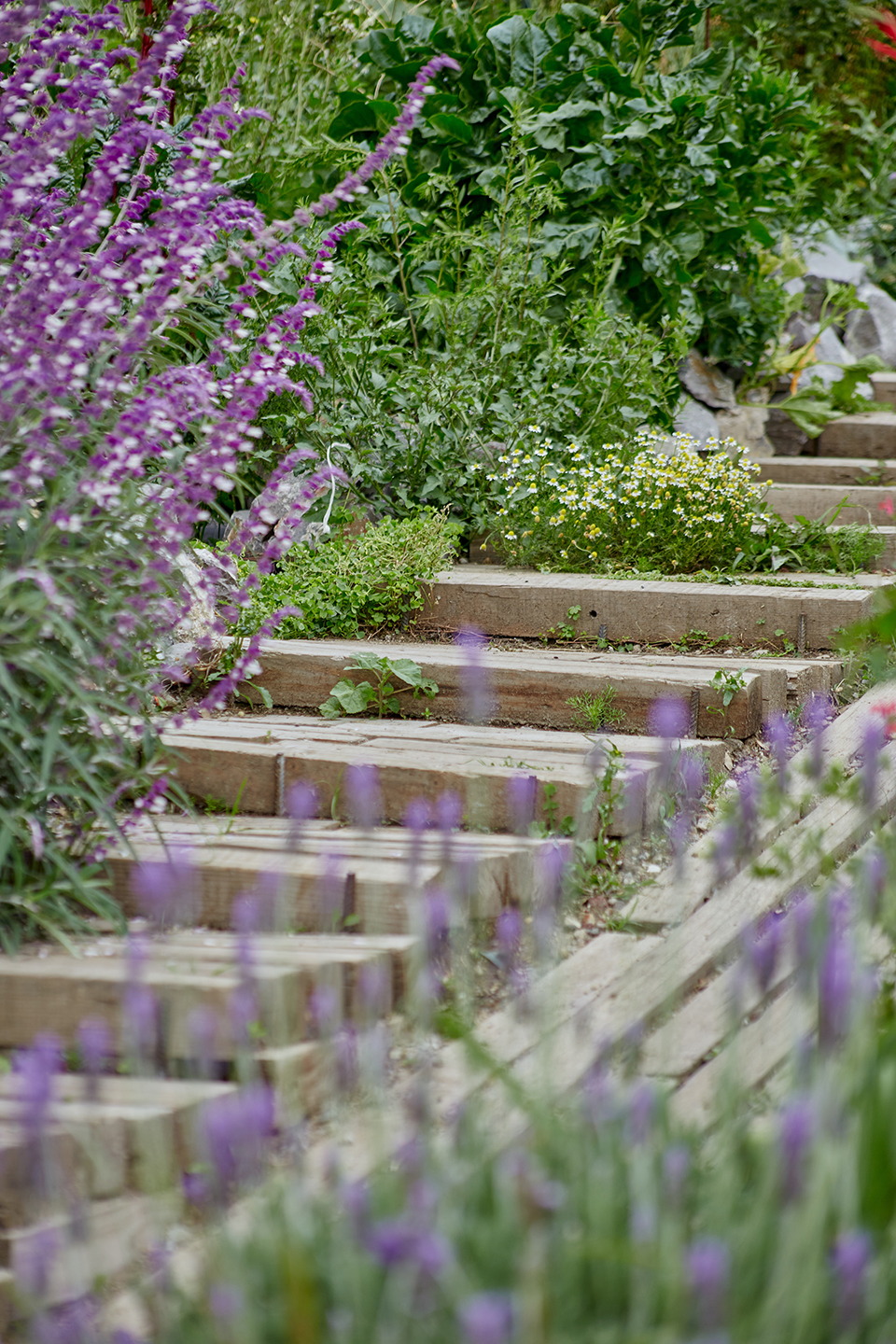El Terreno是于新冠疫情期间启动的社区花园&教育中心项目,位于土壤、矿物质和石材丰富的山丘上,为种植鲜花、香料和蔬菜的城市果园提供原料。该项目使社区青年持续接受社会刺激和环境教育,除此之外,它还与粮食生产和可持续生活密切相关。
El Terreno is a community garden and educational center project that was initiated during the COVID-19 outbreak. The project is located on a hill of rich soil, minerals, and stones, providing the ingredients of an urban orchard for growing flowers, aromatic plants, and vegetables. The project was developed as a way of enabling youth in the community to remain connected to social stimulation, while simultaneously receiving an environmental education. Additionally, the project provides a closer connection to the cycles of food production and sustainable living.
▼项目概览,general view © Ricardo de la Concha
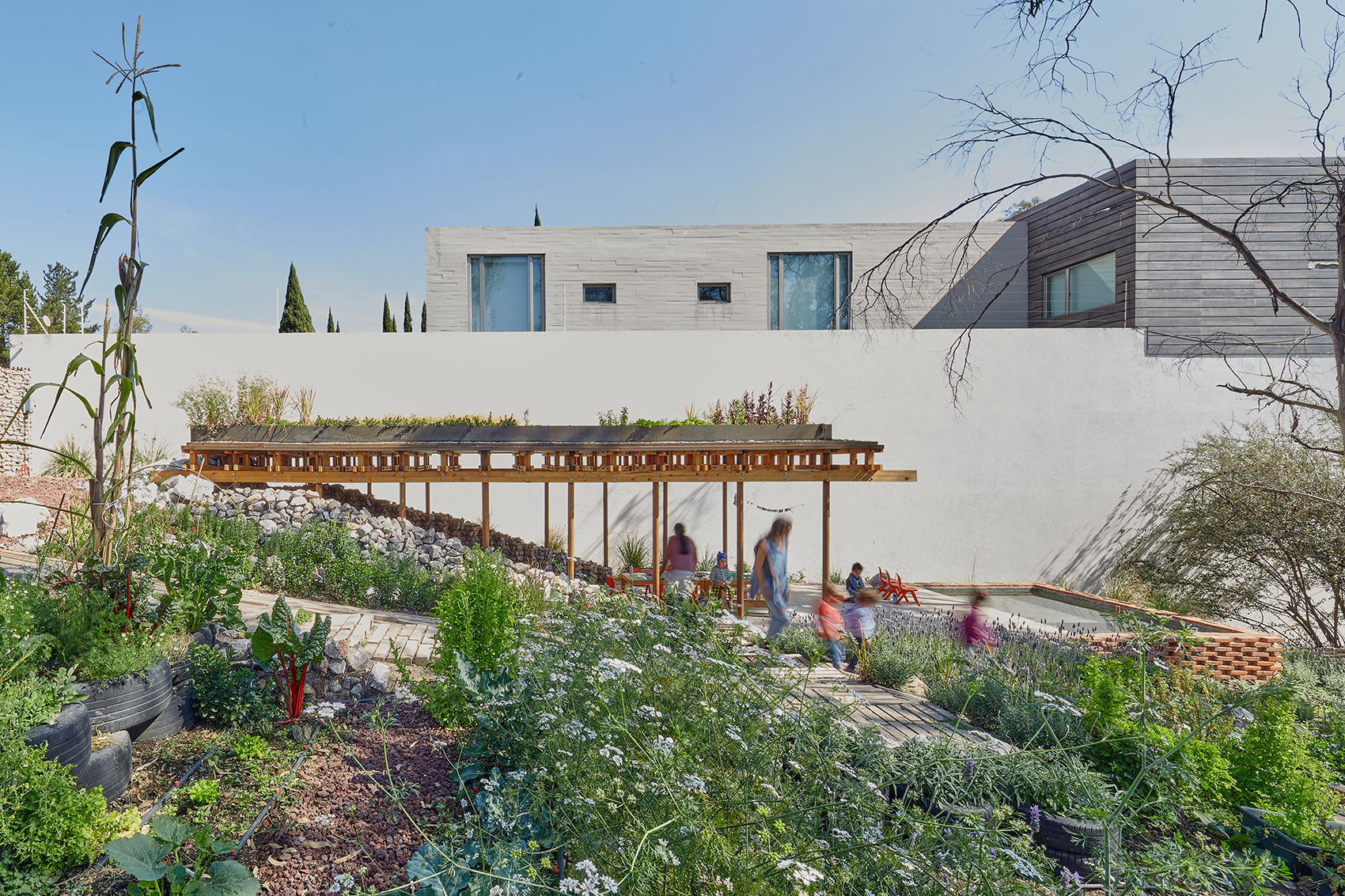
▼俯瞰凉亭与花园,overlooking the pavilion and the garden © Ricardo de la Concha
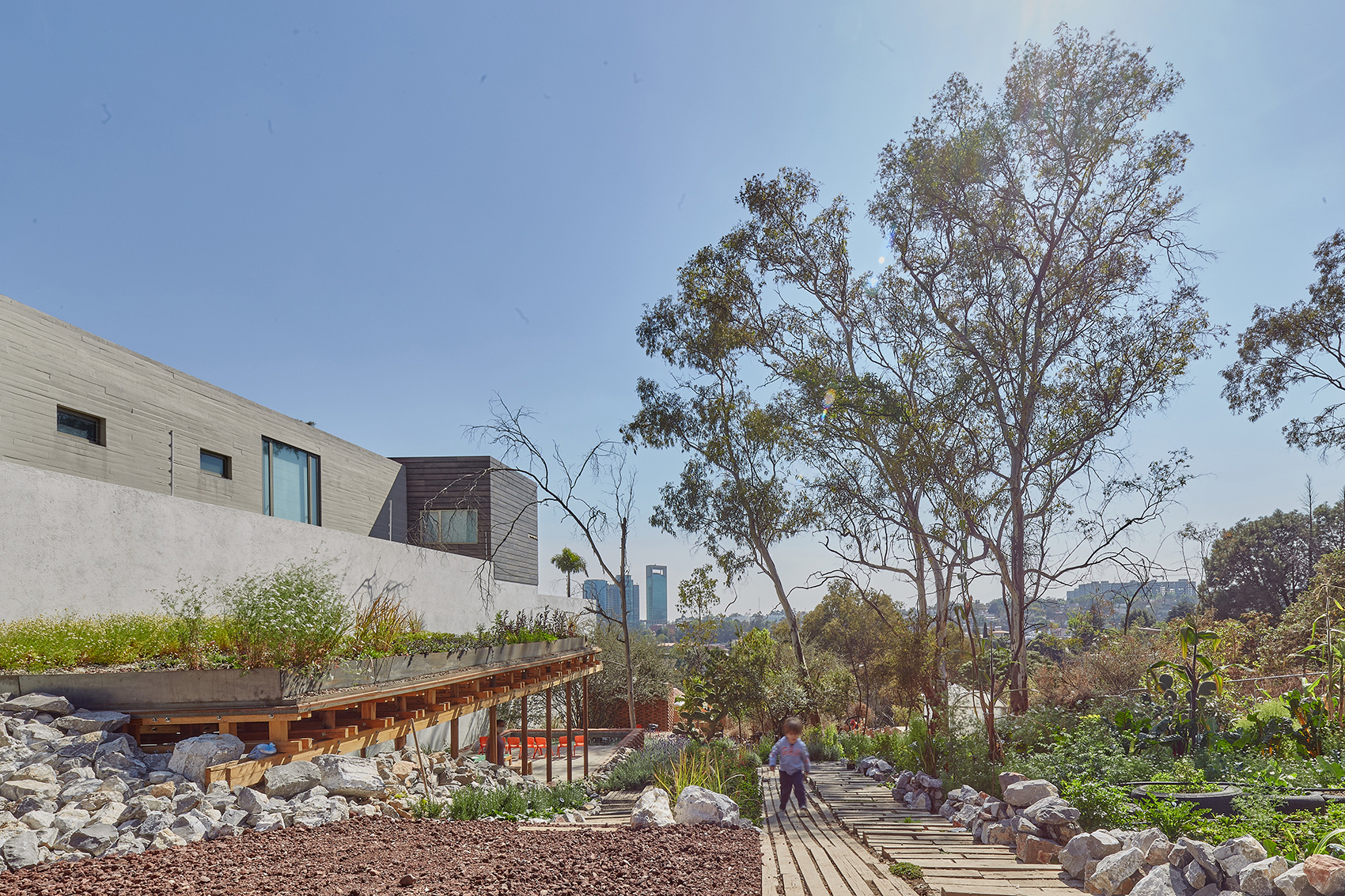
为了契合主题,设计团队利用原来项目中的回收材料建造了这个独特的凉亭。设计团队需要建造100%可回收的建筑以及由专门为该项目研发的材料、模块和单元组成的空间。在讲解该项目时,设计团队表示:“我们设计多元化和多功能的新空间,防止使用者进入时产生特定的倾向。在这里,使用者只有通过参与、建立和环保理念,才能有所收获。”
To be consistent with the project, VERTEBRAL constructed a unique pavilion from recycled materials used in their previous constructions. It was important for the firm to successfully build a 100% recyclable building, but also a space built using materials, modules, and units uniquely thought out through new processes developed for this particular project. In explaining El Terreno, the Mexico City-based architects said: “We focused on avoiding any user predispositions when entering this new space, designed for plurality and versatility. It is a space that can only gain significance through user engagement, and through the cultivating and sharing of new ideas directed towards a healing environment.”
▼凉亭与花园的关系,the relationship between the pavilion and the garden © Ricardo de la Concha

▼花园一角,corner of the garden © Ricardo de la Concha
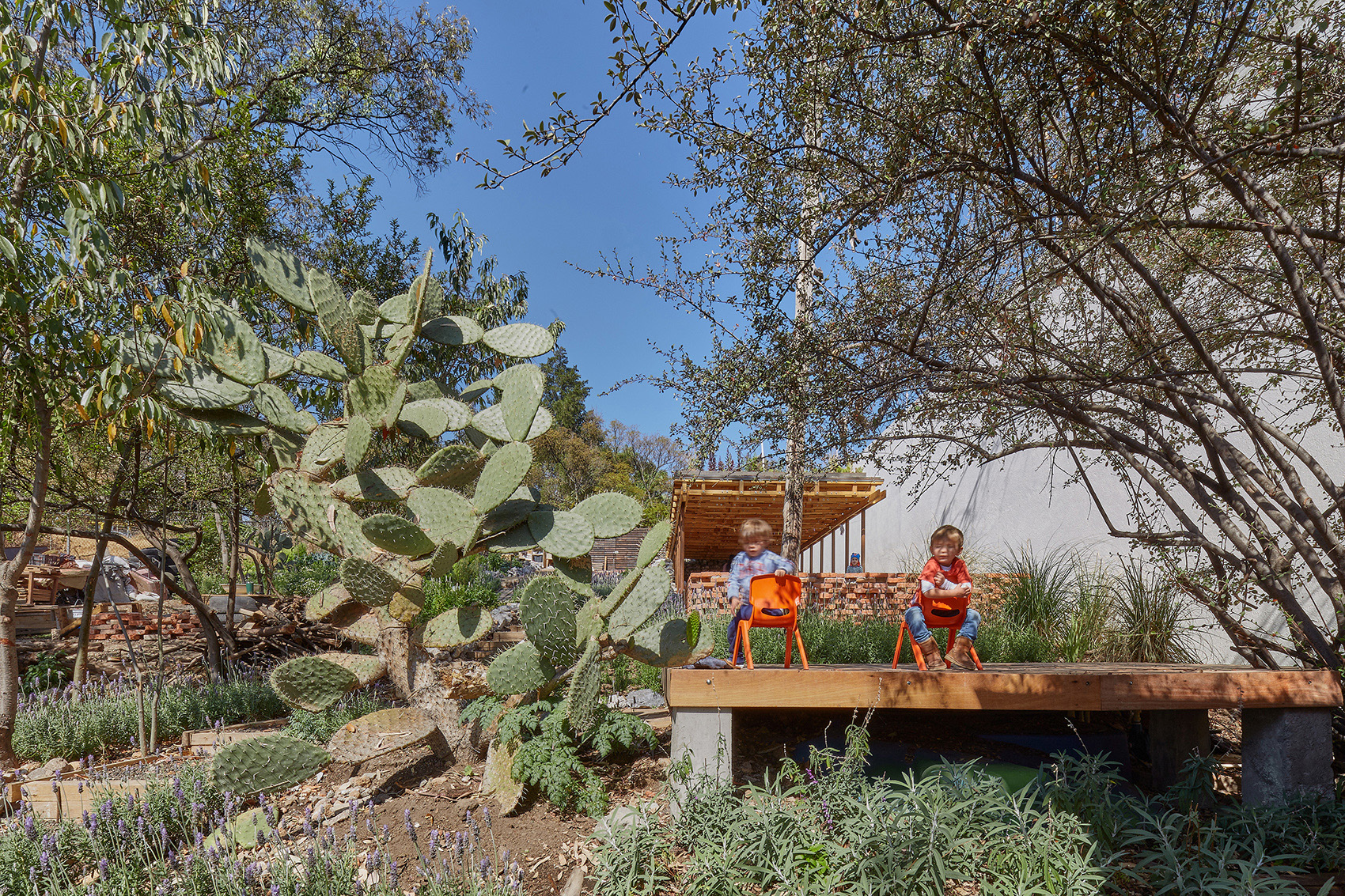
多功能凉亭建在山坡上,逐渐向花园开敞。铁制杆件弯曲相接,安装在从现场取材的石墙上。凉亭顶部采用曾经用作混凝土模板的木桁架,当地社区志愿者仅用四块模板便将所有桁架组装完成。对于设计团队来说,建造灵活的、多功能的凉亭至关重要,这体现了他们对建筑未来的愿景。“被严格定义的空间很快就会过时,相比之下,没有特定功能和模糊的空间具有弹性和多面性,允许使用者改变其意义和用途。”
The multipurpose pavilion is built into the hillside, allowing for a gradual aperture towards the garden. Sections of iron rods were bent and welded, and are contained in walls filled with stone acquired through excavation of the site. The roof is composed of wooden trusses that were once concrete formwork. Through only four different modules, all of the trusses were assembled by volunteers from the local community. For VERTEBRAL, it was important to create a flexible, multipurpose pavilion, which reflects the Mexico City-based firm’s vision of the future of architecture. “Strictly-defined spaces quickly become obsolete. By contrast, anonymous and ambiguous spaces are resilient and multifaceted, allowing for shifts in their significance and purpose among users.”
▼凉亭外部,exterior of the pavilion © Ricardo de la Concha
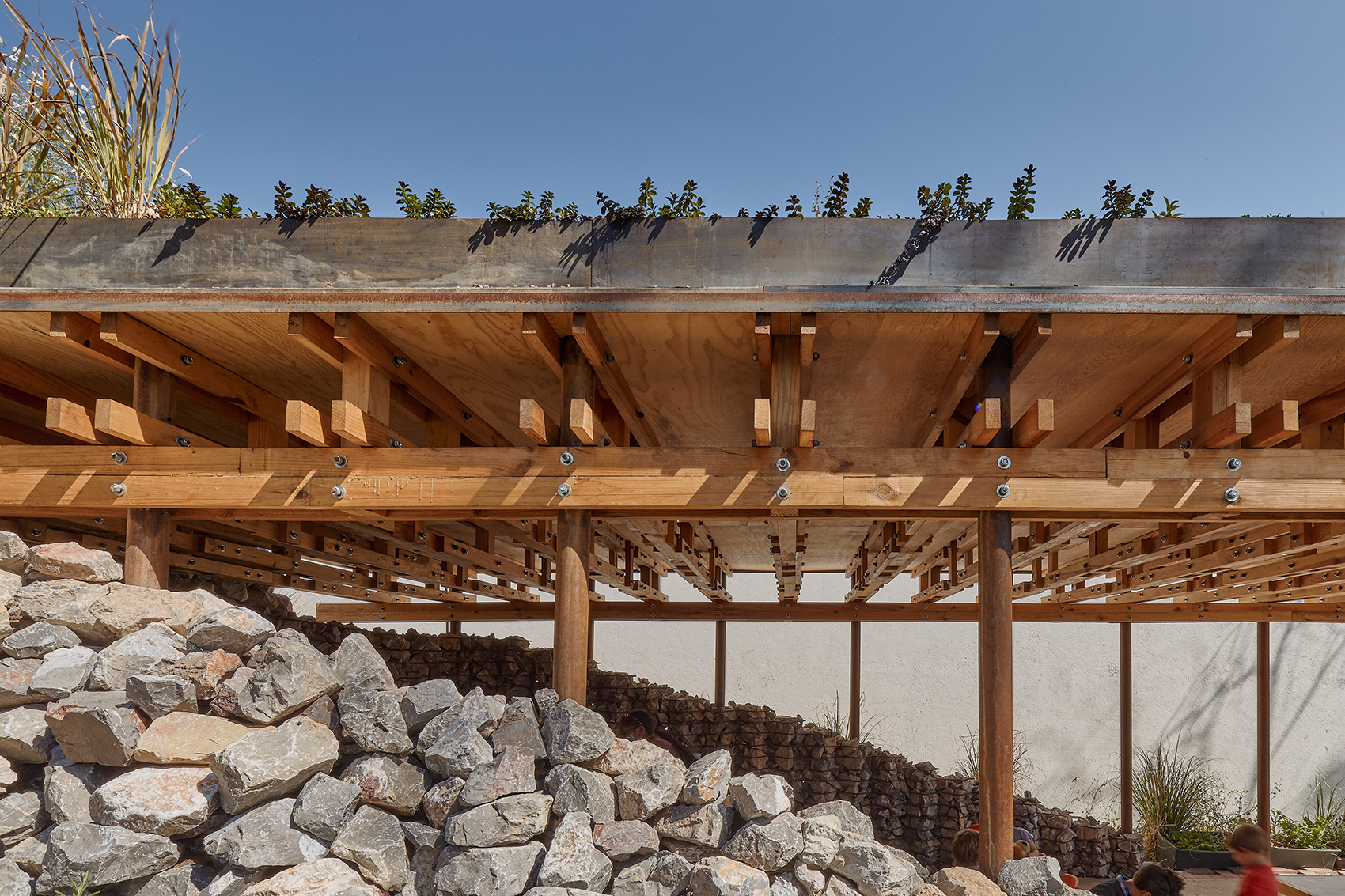
▼凉亭内部,interior of the pavilion © Ricardo de la Concha
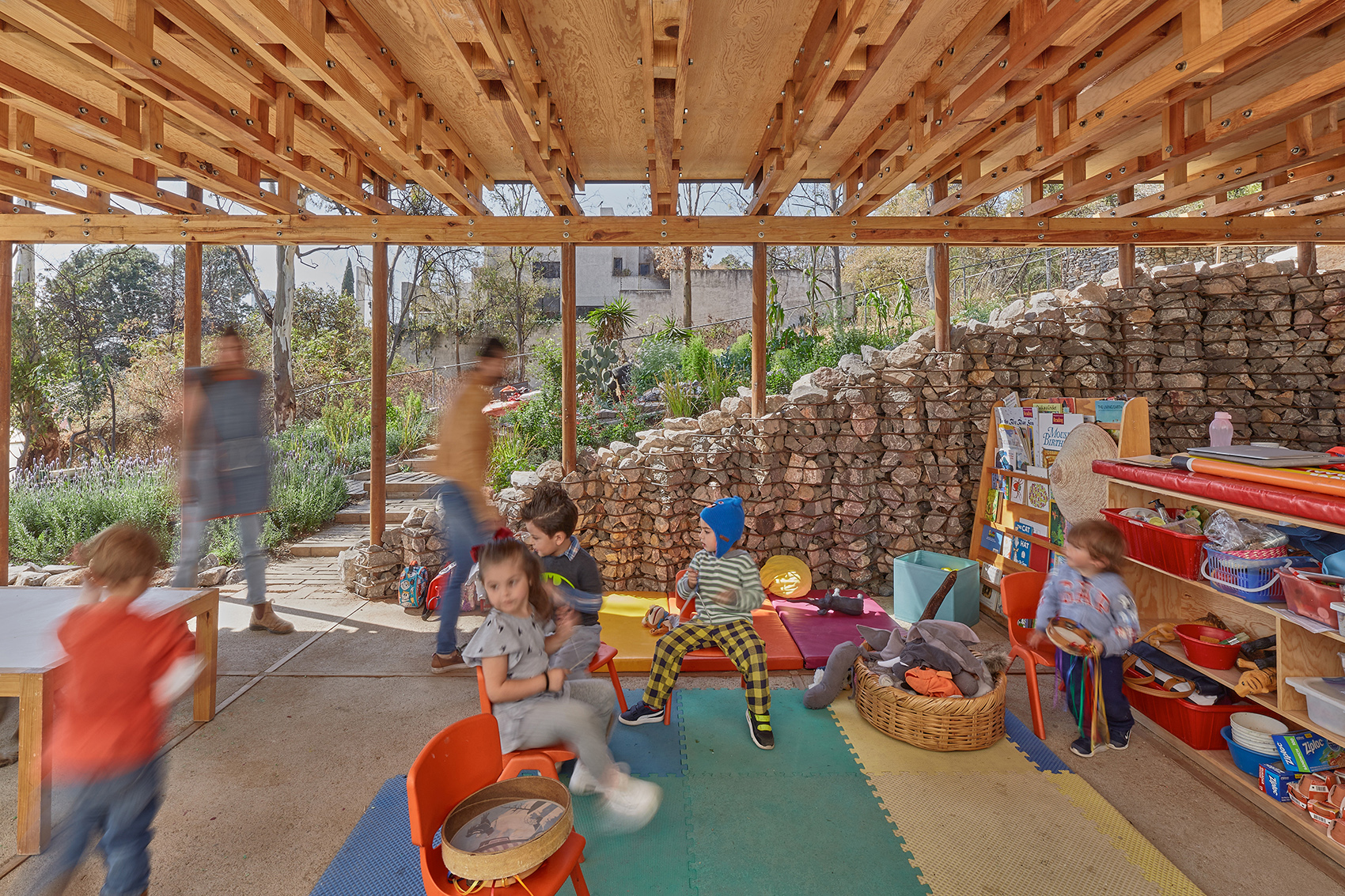
▼教育活动,educational activities © Ricardo de la Concha
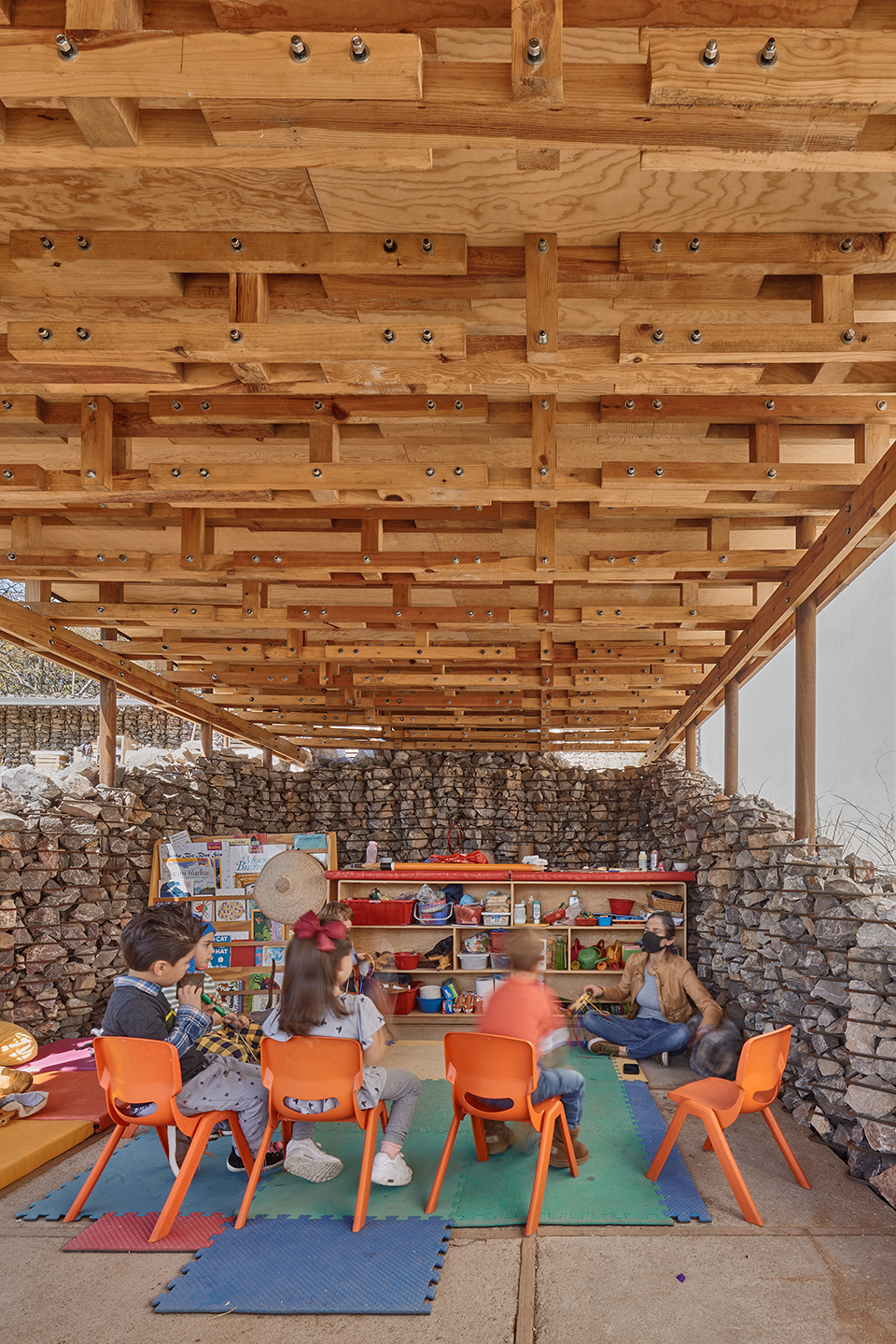
▼从凉亭内望向花园,view to the garden from the interior © Ricardo de la Concha
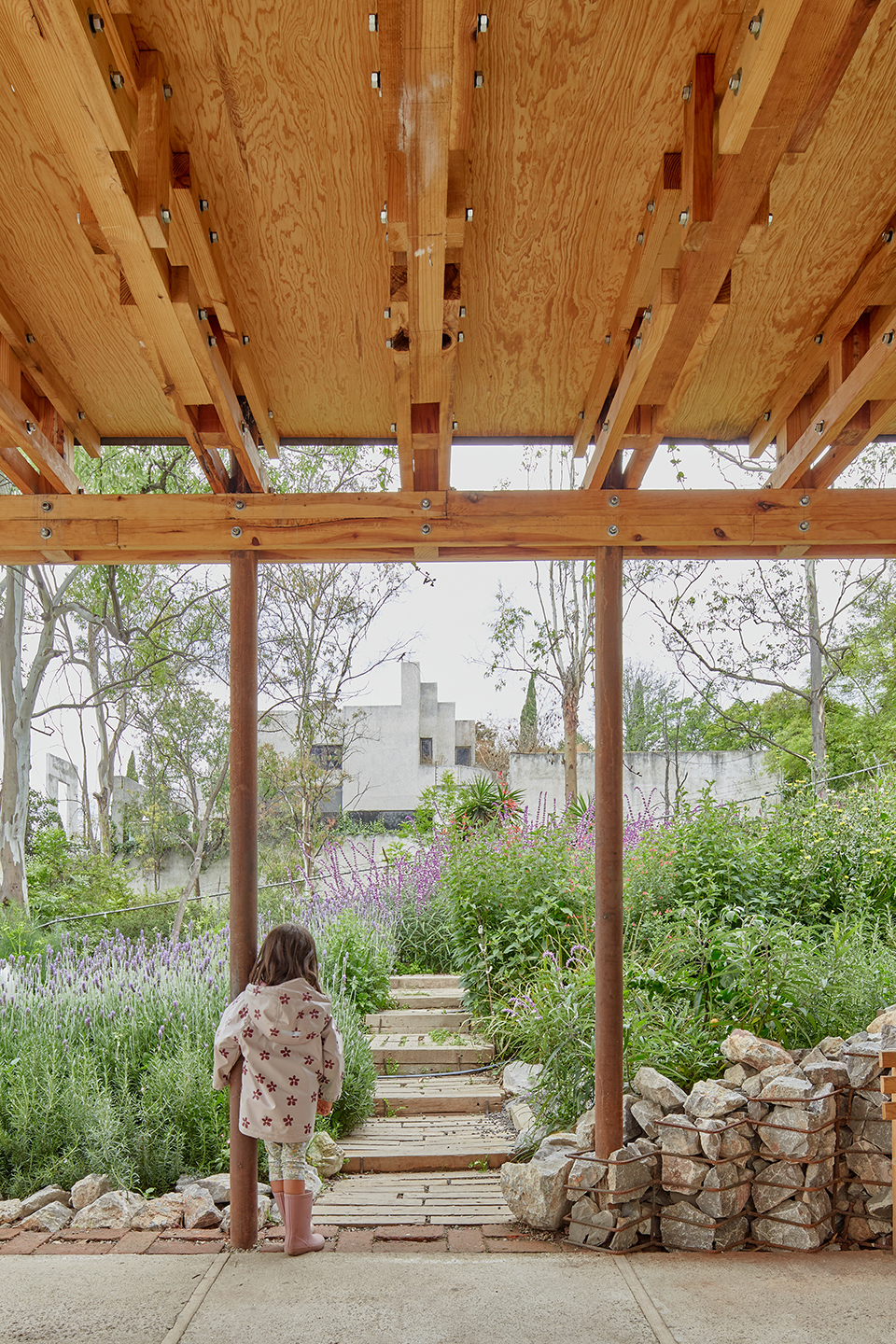
▼木桁架屋顶,wooden truss roof © Ricardo de la Concha

▼由弯曲铁杆包裹的石墙 © Ricardo de la Concha the stone wall wrapped by curved iron rods
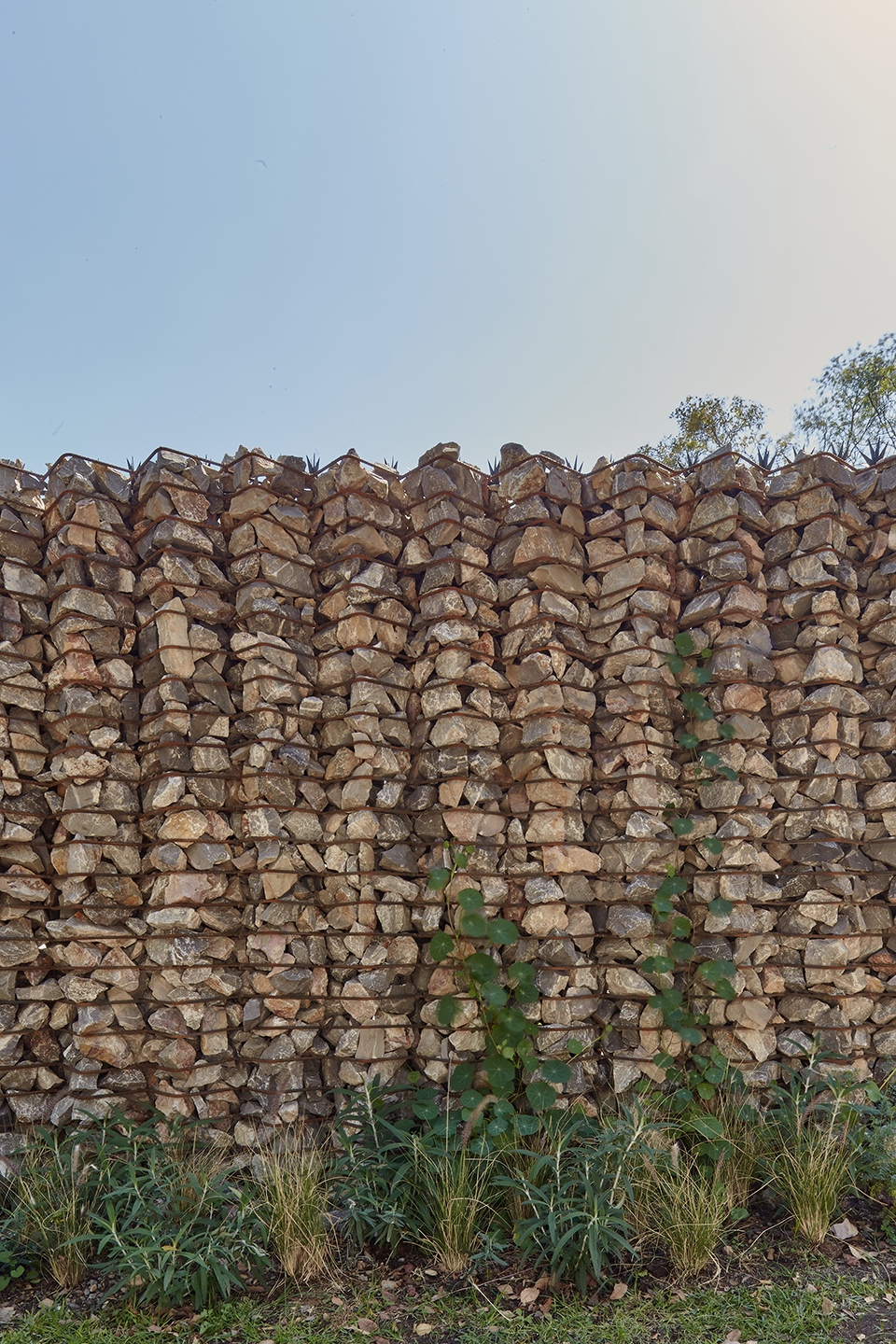
▼石墙细部,details © Ricardo de la Concha
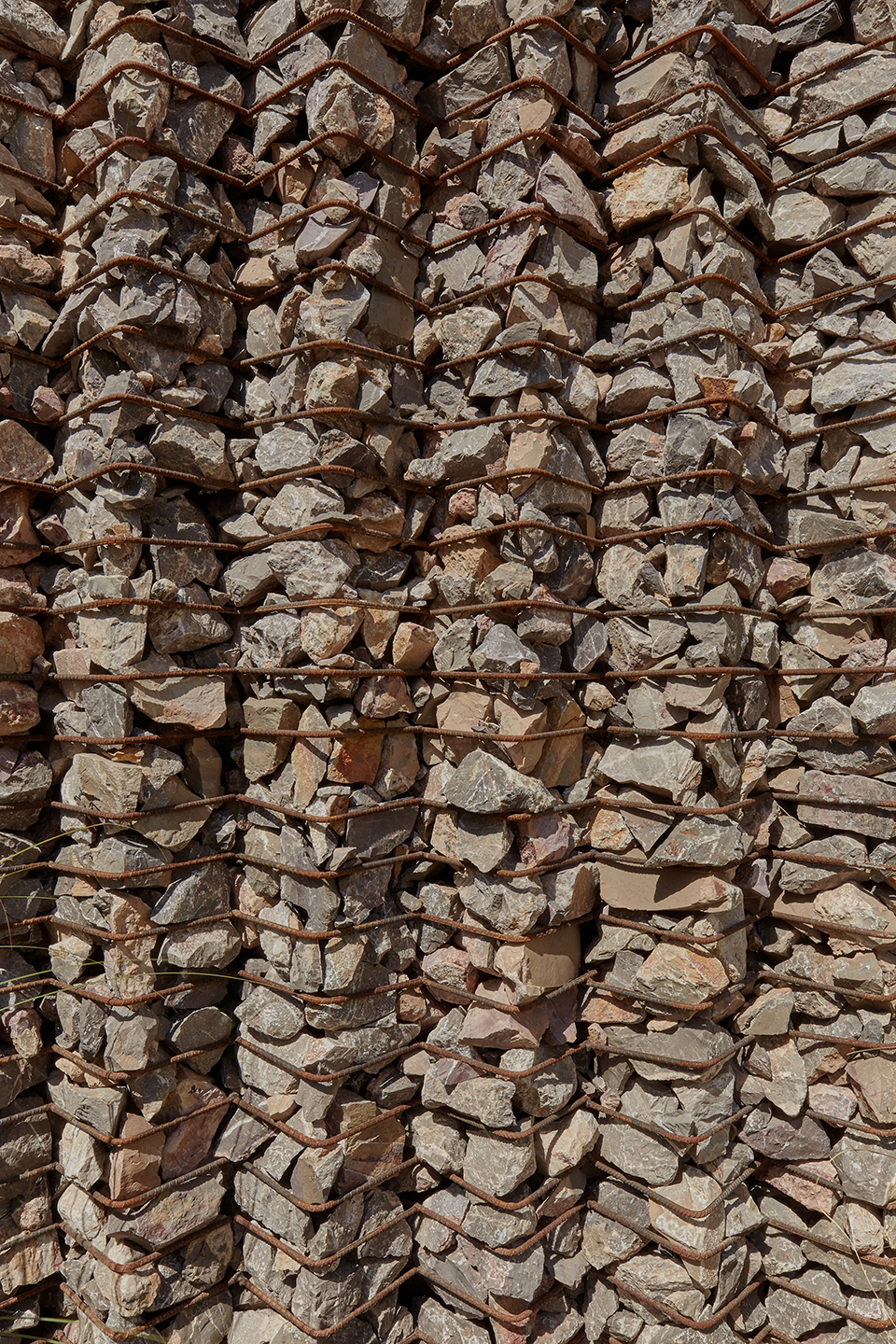
该项目的发起人Michelle Kalach密切地参与了这个远离喧嚣的自给自足社区的建设。El Terreno通过教育项目收获特有的植物和蔬菜,并将它们售卖给当地咖啡馆和商店,获得稳定的经济来源,已经彻底成为自给自足的花园。雨水通过绿色屋顶上的系统被收集起来,流经还用作结构柱的管道,汇聚在积水池中,并从这里被水泵抽回果园。所用能源来自太阳能板,堆肥厕所产生的废料用作花园的天然肥料。
The founder of the project, Michelle Kalach, is deeply involved with self-sufficient communities that are off the grid. El Terreno has become a self-sustained garden through the economic stability of endemic plant and vegetable sales, cultivated through educational programs and then sold to local cafes and stores. Rainwater is captured through a system originating on the green roof of the pavilion, which then passes through pipes that also serve as structural columns. Finally, the rainwater descends into a cumulative body of water, from where it is pumped back into the orchard. Energy consumption is generated through solar panels, and waste from composting toilets is used as a natural fertilizer for the garden.
▼花园,the garden © Ricardo de la Concha
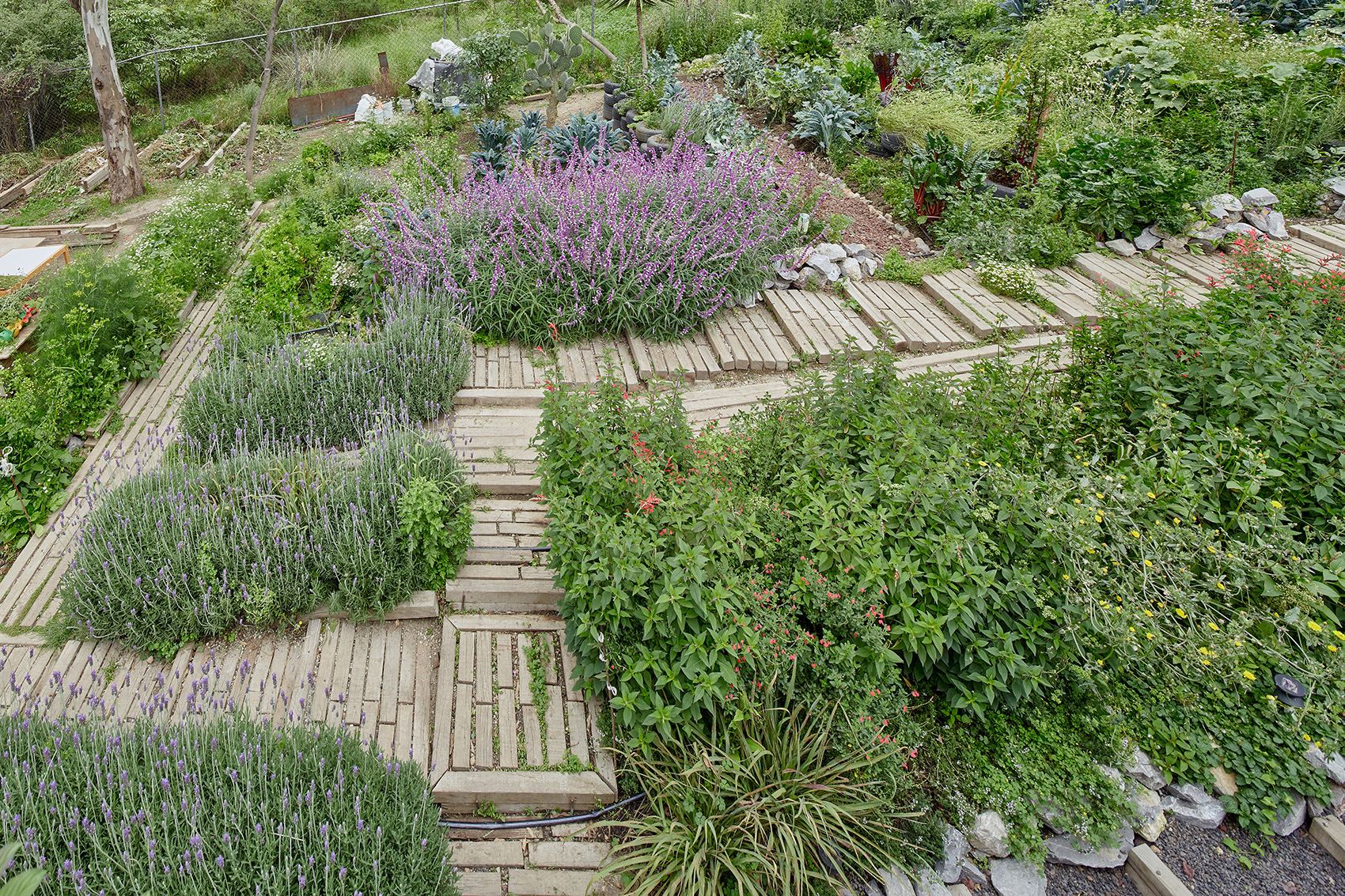
▼绿植簇拥的石阶,stone steps surrounded by green plants © Ricardo de la Concha
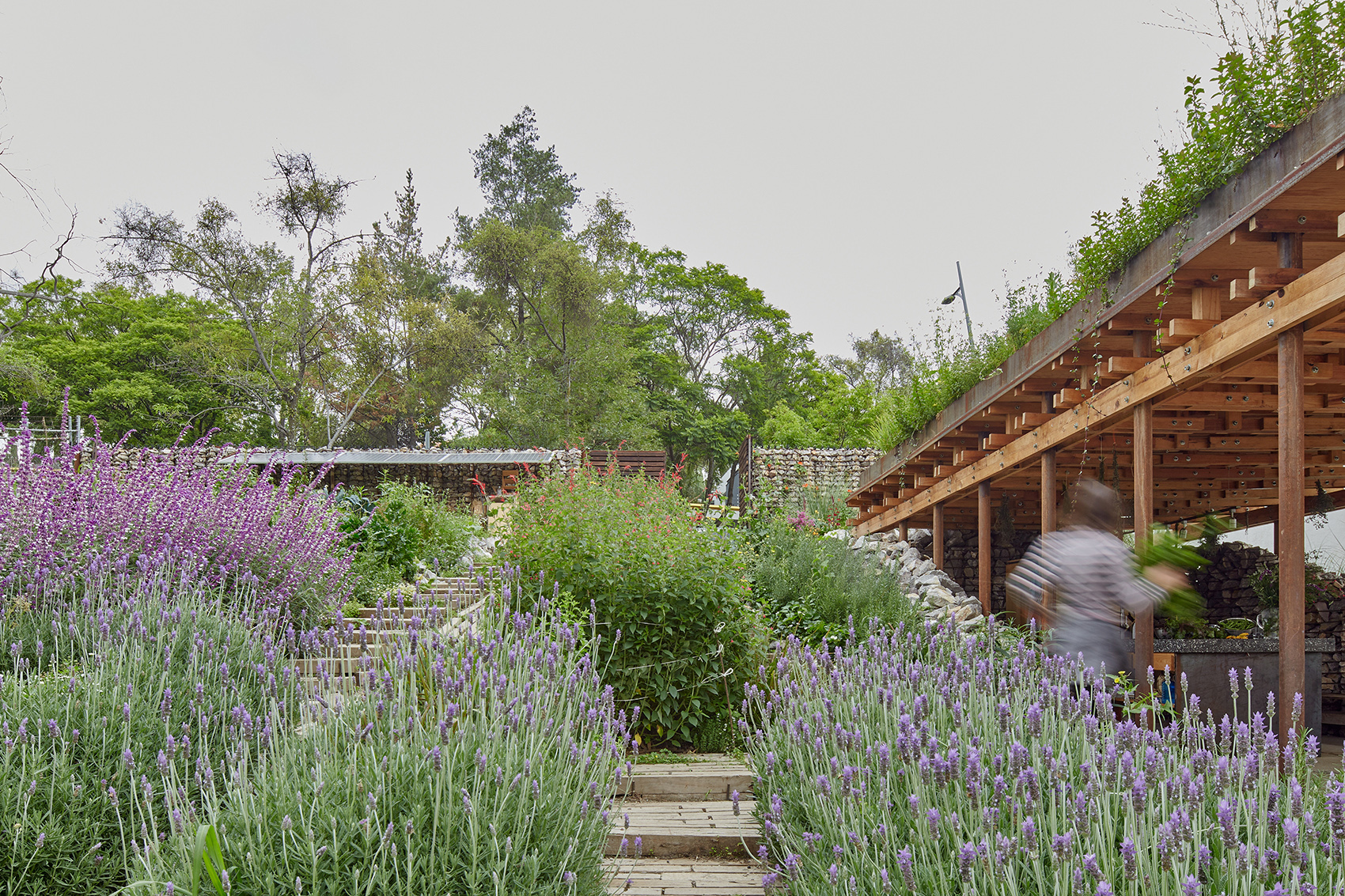
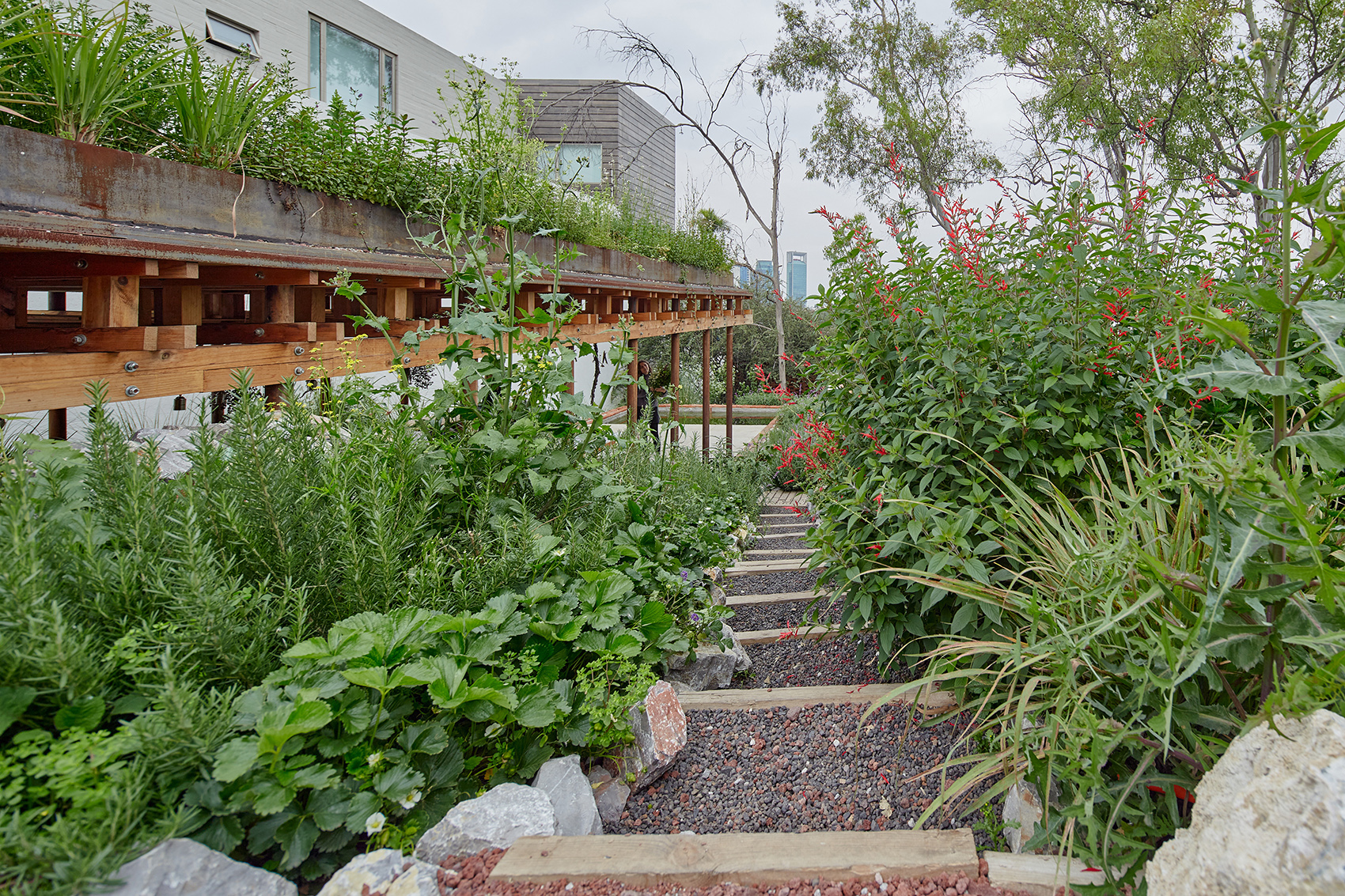
▼独有的植物与蔬菜,unique plants and vegetables © Ricardo de la Concha


El Terreno是将教育、可持续性和设计结合起来的空间典范,可以收获永远能满足当下需求的光明未来。
El Terreno is a space built as a model of how education, sustainability, and design can come together to harvest a bright future that perpetually responds to immediate needs.
▼平面图,plan © VERTEBRAL

▼立面图,elevation © VERTEBRAL
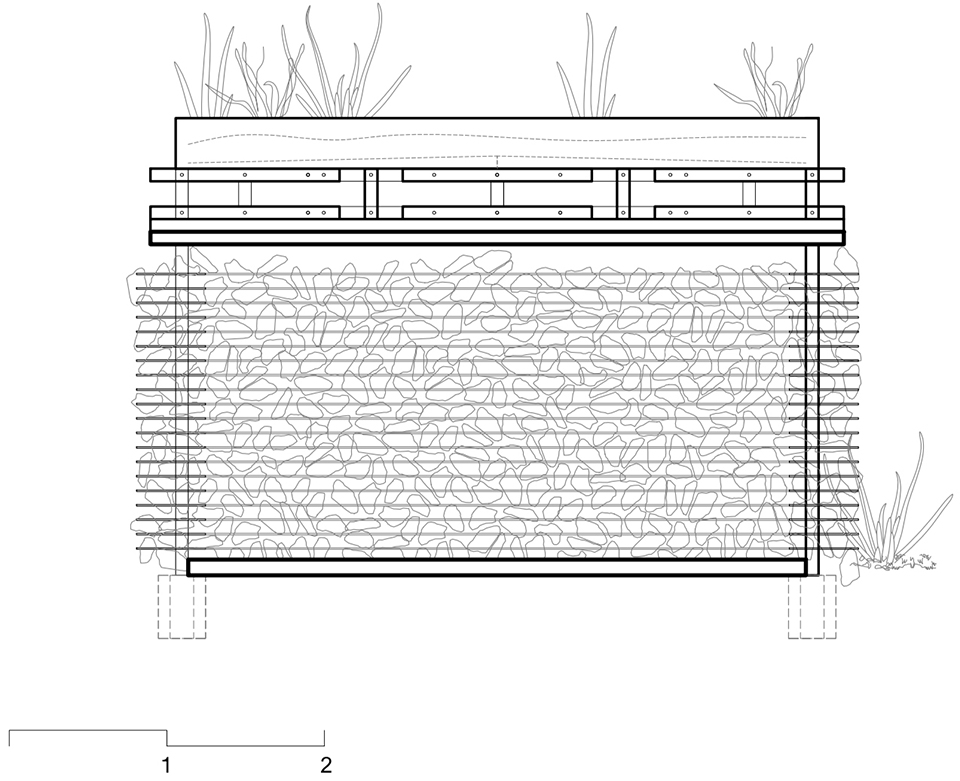
▼剖面图,section © VERTEBRAL

Design and Construction: VERTEBRAL Start Date: FEB. 2020 Completion Date: April 2020 Photo: Ricardo de la Concha Sustainability: Michelle Kalach Art Director: Fortuna Hanono Structural engineer: Ricardo Gavira Volunteers: Sara Bautista, Daniel Beltran, Erasto Beltran

